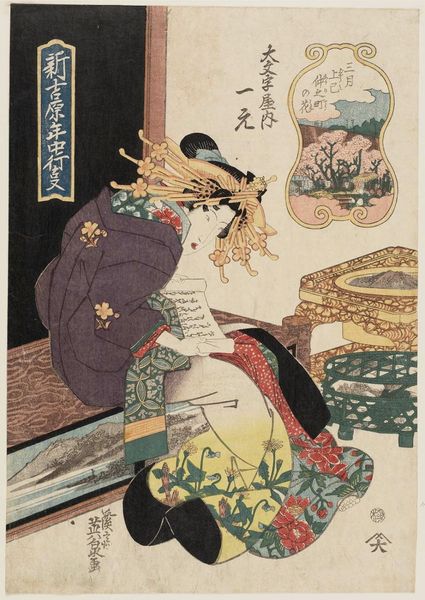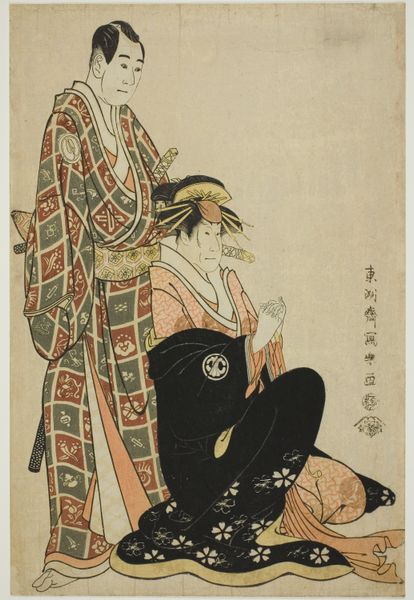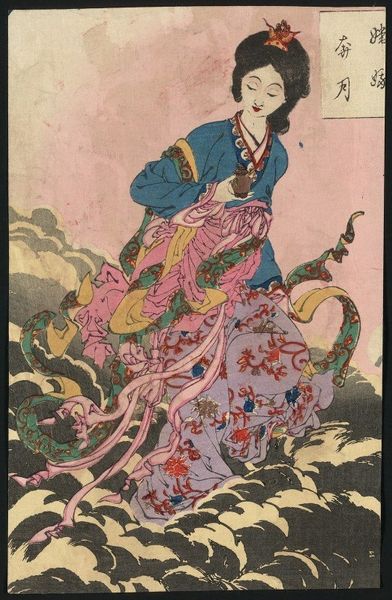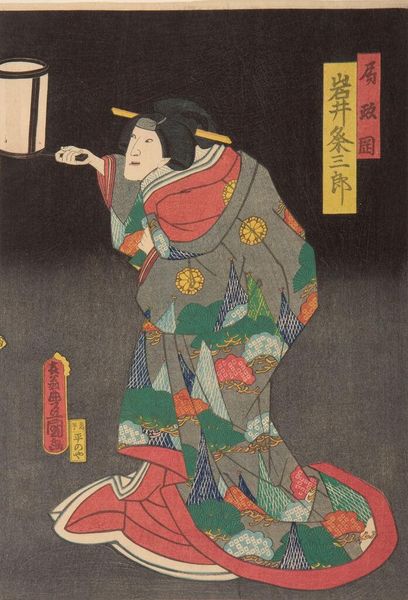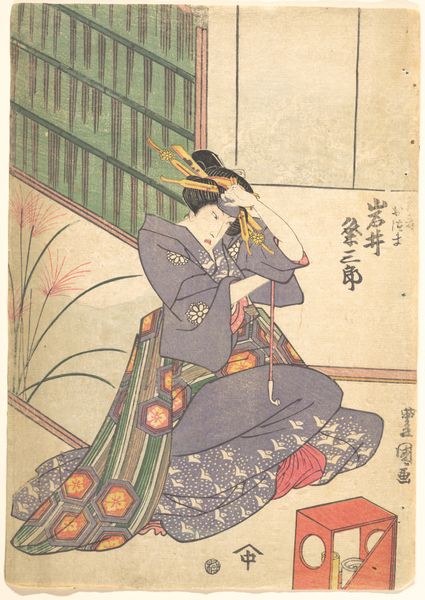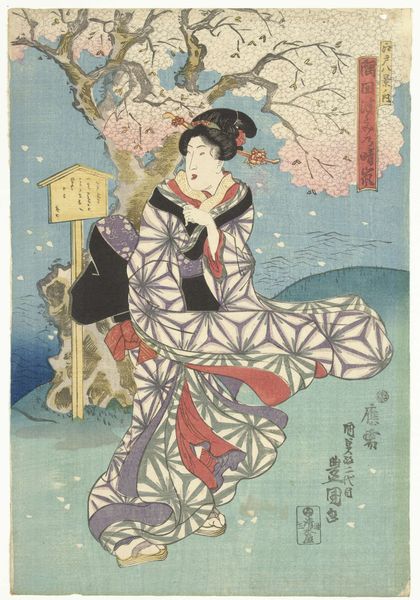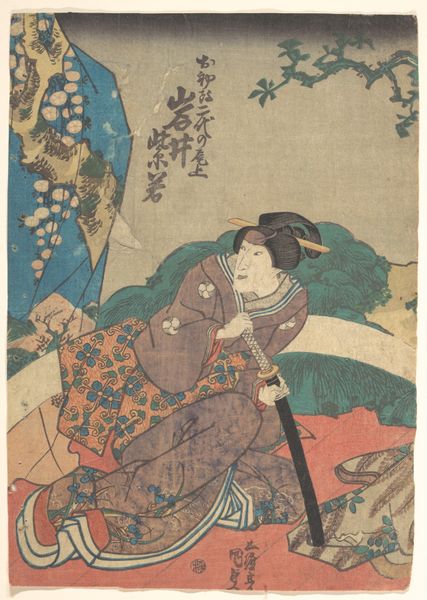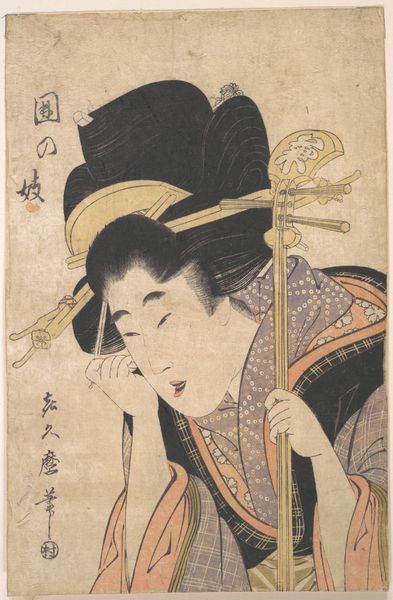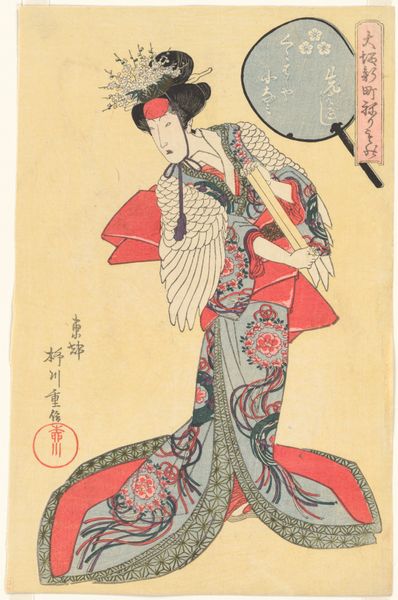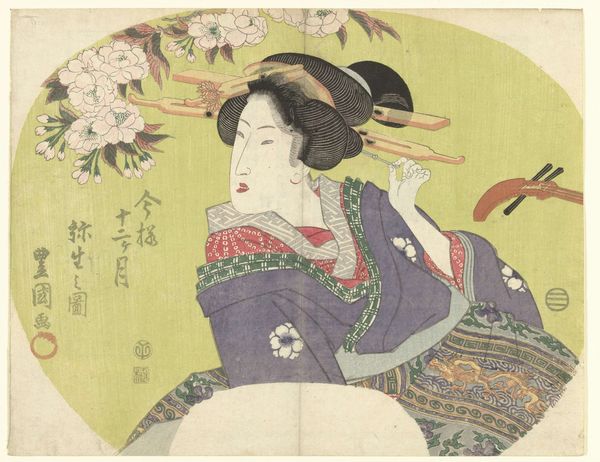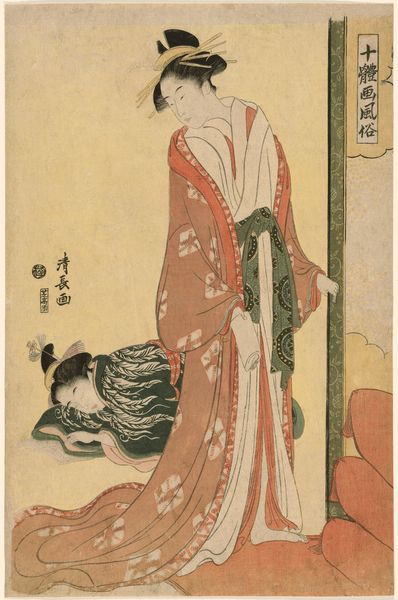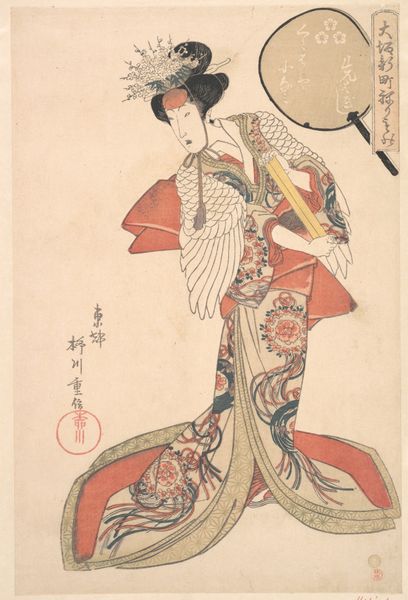
Copyright: Public domain US
Curator: Looking at this ukiyo-e woodblock print from 1903, I see a serene, almost melancholic beauty. The delicate lines and soft colors evoke a feeling of quiet introspection. Editor: It's immediately captivating, isn't it? There’s a powerful story unfolding here. Considering the work is titled "Bijin in Pink and White Curtain", who was Kaburagi Kiyokata aiming to capture? What narratives were permitted and which were excluded during this period? Curator: The term 'bijin-ga,' referring to images of beautiful women, became a popular subject, depicting the contemporary women who, more often than not, worked in the pleasure districts. There's a real tension here. Kiyokata lived through great political upheaval and it's difficult to avoid themes around commodification in his rendering of this particular subject matter. Editor: I’m also drawn to the flowers she holds, they feel almost talismanic. Their symbolic meaning can also point towards certain ideas linked to the feminine, such as beauty and ephemeral nature. Is she grieving, perhaps, or contemplating a loss? Curator: Or perhaps embodying the "mono no aware"—the poignant awareness of the transience of things? That was a defining characteristic of much Japanese art. Even the patterned kimono she wears tells us something of her class and perhaps the context she lived in, while also hiding details that speak to more hidden desires, such as rebellion, or resistance. Editor: Indeed. Even the backdrop, that seemingly simple pink and white curtain, resonates with symbolic meaning. Are they barriers, or thresholds? The lack of firm context invites a broader reading. It feels very open. Curator: It’s interesting to see how we’ve approached this print from such different angles. Your focus is on the iconographic reading, I think it's important not to overlook the context of ukiyo-e and Kaburagi’s career overall. He wasn’t just creating pretty pictures; he was reflecting a changing society and challenging its constraints through representations of the female form. Editor: I’ve found myself returning to that quiet moment with the flowers again. In a world of fleeting beauty and transient pleasures, such symbolism is the lasting echo of deep cultural memory. It transcends any given context or assigned position, inviting contemplation on the self and on being. Curator: In examining this piece, it becomes clear that appreciating an artwork like this demands we navigate intersectional layers—art historical, political, and aesthetic—and confront complicated ideas of identity, class, gender, and representation. Editor: I agree. These dialogues are key to ensuring art retains meaning for future generations.
Comments
No comments
Be the first to comment and join the conversation on the ultimate creative platform.
